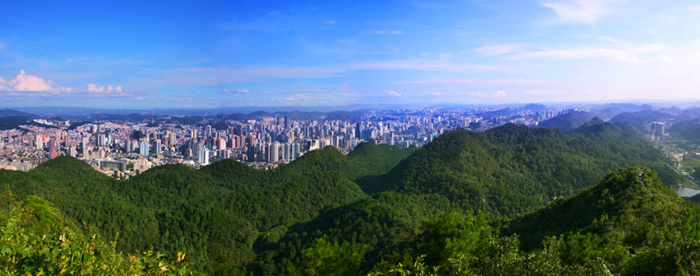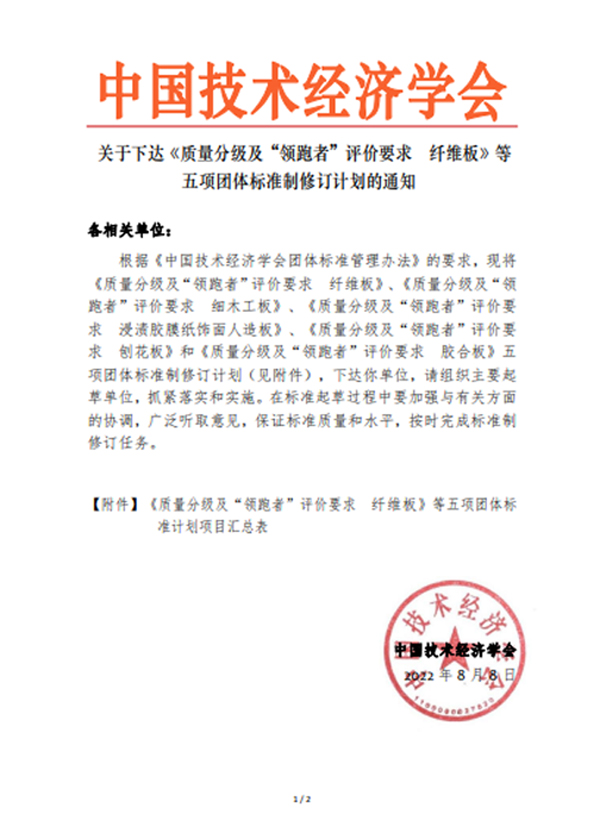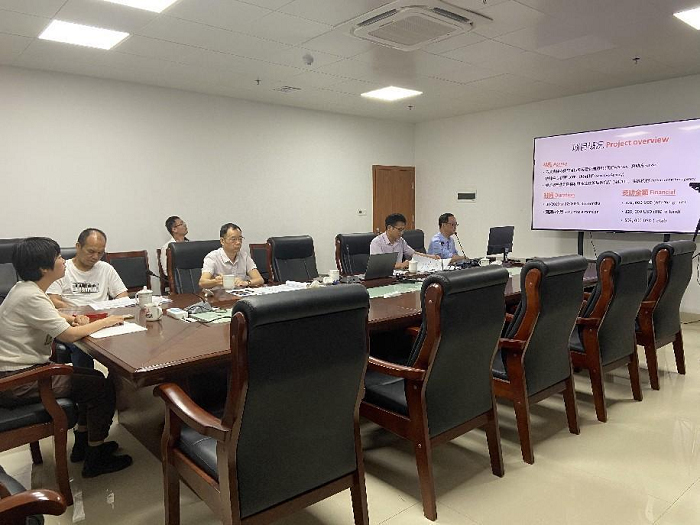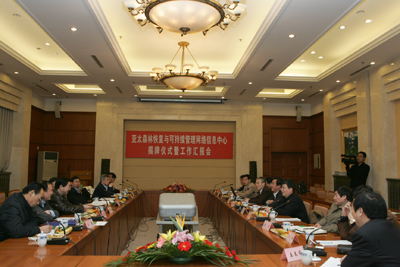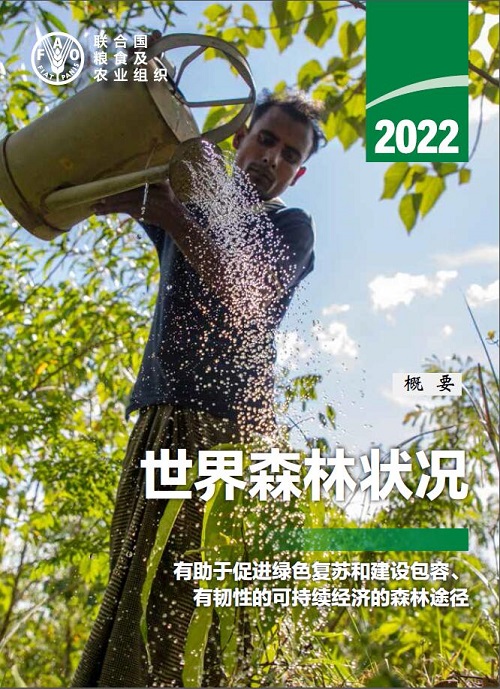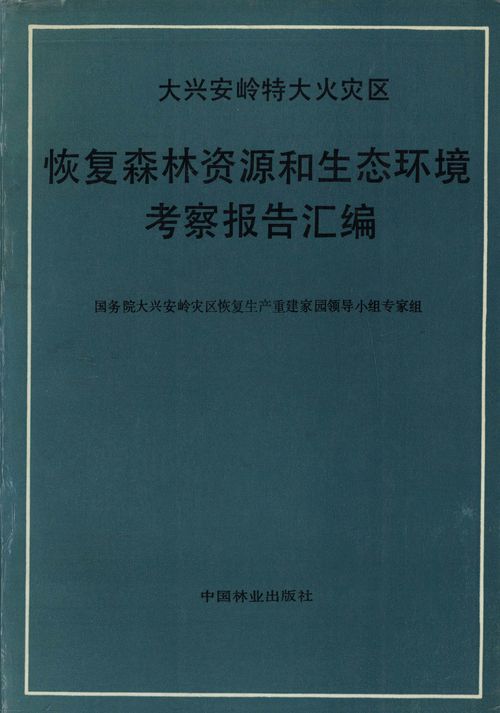
森林碳汇与森林恢复评价刍议
编号
lyqk009047


中文标题
森林碳汇与森林恢复评价刍议


作者单位
中国林业科学研究院林业研究所 国家林业和草原局林木培育重点实验室, 北京 100091


期刊名称
林业科技通讯


年份
2020


卷号
0


期号
8


栏目名称
学术研究


中文摘要
毁林和森林退化成为继化石燃料燃烧之后第二大温室气体排放源,森林恢复是减缓(减少)毁林和森林退化的重要途径,许多国家独自或联合起来,持续的进行森林恢复活动。联合国与农业组织(FAO)最新估计,2001-2015年,全球因毁林导致的温室气体排放已经从3.9 GtCO2-eq/a下降到2.9 GtCO2-eq/a。这主要归因于中国、巴西、智利、菲律宾、韩国、越南、土耳其、乌拉圭和哥斯达黎加等一些国家在减少毁林和增加森林面积方面所做的贡献。近期,我国林业局对外公布的《省级林业应对气候变化2017-2018年工作计划》指出,加强森林生态系统保护和建设、增加森林碳汇、控制林业温室气体排放及提高林业适应能力等已列入国家战略和规划。可以预见,森林恢复在未来应对气候变化工作中将发挥更大的作用。基于此,对森林碳汇和森林恢复评价进行刍议,为我国未来的森林恢复工作提供参考。


英文标题
Discussion on Forest Carbon Sink and Forest Rehabilitation Evaluation


英文摘要
Deforestation and forest degradation are the second largest source of greenhouse gas emissions after the burning of fossil fuels, and forest rehabilitation is an important means of mitigating(reducing) deforestation and forest degradation, with many countries acting individually or jointly to sustain forest rehabilitation activities. Global greenhouse gas emissions from deforestation have dropped from 3.9 GtCO2-eq/a to 2.9 GtCO2-eq/a between 2001 and 2015, according to recent estimates by the United Nations and the Agriculture Organization of the United Nations(FAO). This is largely attributable to the contribution of a number of countries, including China, Brazil, Chile, the Philippines, Korea,Viet Nam, Turkey, Uruguay and Costa Rica, in reducing deforestation and increasing forest area. Recently, the Provincial Forestry Work Plan for Combating Climate Change 2017-2018 published by China's Forestry Administration states that strengthening the protection and construction of forest ecosystems, increasing forest carbon sinks, controlling forest greenhouse gas emissions and improving forest adaptive capacity have been included in national strategies and plans. Forest rehabilitation is expected to play a greater role in future efforts to combat climate change. Based on this, the paper makes a brief discussion on forest carbon sink and forest rehabilitation evaluation, and provides a reference for future forest rehabilitation work in China.


英文关键词
forest carbon sink;forest rehabilitation;assessment index


英文基金项目
Demonstration on Sustainable Forest Management and Restoration in Hilly and Low Mountain Area of Southern China (2016P2-CAF)。


起始页码
3


截止页码
7


作者简介
田甜,博士研究生,研究方向:退化生态系统修复。E-mail:tt3000@sina.cn


通讯作者介绍
姜春前,研究员。E-mail:jiangchq@caf.ac.cn


E-mail
jiangchq@caf.ac.cn


分类号
F326.2;S718.5


DOI
10.13456/j.cnki.lykt.2019.07.11.0006


参考文献
[1] H. KASSAa, E. BIRHANEb, c, M. BEKELEd, et al. Shared strengths and limitations of participatory forest management and area exclosure:two major state led landscape rehabilitation mechanisms in Ethiopia[J]. International Forestry Review, 19(S4), 2017:51-61.
[2] 李怒云, 杨炎朝, 何宇.气候变化与碳汇林业概述[J].开发研究, 2009(3):95-97.
[3] 白彦锋, 雷静品, 肖文发, 等.森林管理与碳-应对全球气候变化的REDD+研究[M].北京:科学出版社, 2017:1-104.
[4] 武曙红, 张小全, 宋维明.国际自愿碳汇市场的补偿标准[J].林业科学, 2009, 45(3):134-138.
[5] 国家林业局.省级林业应对气候变化2017-2018年工作计划[EB/OL].http://www.gov.cn/xinwen/2017-07/26/content_5213487.htm.
[6] 李贤伟, 罗承德, 胡庭兴, 等.长江上游退化森林生态系统恢复与重建刍议[J].生态学报, 2001, 21(12):2117-2124.
[7] 向成华, 刘洪英, 何成元.恢复生态学的研究动态[J].四川林业科技, 2003, 24(2):17-21.
[8] 宋永昌.植被生态学[M].上海:华东师范大学出版社, 2001:598-599.
[9] 余作岳, 彭少麟.热带亚热带退化生态系统植被恢复生态学研究[M].广州:广东科技出版社, 1996:1-261.
[10] 马姜明.川西亚高山退化暗针叶林恢复评价的生态学基础及其对策[D].中国林业科学研究院, 2007:1-85.
[11] 田大伦, 王新凯, 方晰, 等.喀斯特地区不同植被恢复模式幼林生态系统碳储量及其空间分布[J].林业科学, 2011, 47(9):7-14.
[12] 蔡进军, 李生宝, 蒋齐, 等.宁南半干旱黄土丘陵区退化生态系统恢复与重建[J].宁夏农林科技, 2009(5):1-3.
[13] 张建, 刘国彬.黄土丘陵区植被恢复对深层土壤有机碳储量的影响[J].自然资源学报, 2010, 20(2):207-217.
[14] 彭振华, 董林水, 张旭东, 等.黄土高原水土流失严重地区植被恢复策略分析[J].林业科学研究, 2005, 18(4):471-478.
[15] 董林水, 张旭东, 周金星, 等.黄土高原植被恢复前景及策略研究进展[J].科学技术与工程, 2006, 6(22):1671-1815.
[16] 张文辉, 刘国彬.黄土高原植被生态恢复评价、问题与对策[J].林业科学, 2007, 43(1):102-106.
[17] 杨振寅, 苏建荣, 罗栋等.干热河谷植被恢复研究进展与展望[J].林业科学研究, 2007, 20(4):563-568.
[18] 费世民, 蒋俊明, 张旭东, 等.再论干热河谷植被恢复过程中的适度造林[J].四川林业科技, 2016, 37(1):13-22.
[19] 漆良华, 张旭东, 周金星, 等.武陵山区小流域典型植被恢复模式产流产沙特征[J].资源科学, 2008, 30(5):709-715.
[20] 漆良华, 张旭东, 周金星, 等.湘西北侵蚀小流域生态恢复适宜度与景观格局特征[J].山地学报, 2009, 27(5):524-530.
[21] 漆良华, 张旭东.湘西北小流域植被恢复综合效应评价[J].南京林业大学学报(自然科学版), 2013, 37(2):71-77.
[22] 刘世荣, 史作民, 马姜明, 等.长江上游退化天然林恢复重建的生态对策[J].林业科学, 2009, 45(2):120-124.
[23] 刘金山, 张万林, 杨传金等.森林碳库及碳汇监测概述[J].中南林业调查规划, 2012(1):61-65.
[24] 白彦锋.REDD+谈判对策及森林管理碳计量和监测方法学[D].北京:中国林业科学研究院博士后出站报告, 2010:1-82.
[25] 张小全, 武曙红.中国CDM造林再造林项目指南[M].北京:中国林业出版社, 2006:1-293.
[26] 陈伟, 宋维明, 程宝栋.基于碳中和的中国林业碳汇交易市场研究[M].北京:中国林业出版社, 2015:48-50.
[27] 李怒云, 杨炎朝.林业碳汇计量(修订版)[M].北京:中国林业出版社, 2017:1-288.
[28] Jim Penman, Michael Gytarshy, Taka Hiraishi, et al.土地利用、土地利用变化和林业优良做法指南[M].日本:全球环境战略研究所(IGES)为IPCC出版, 2000:3.40-3.41.
[29] 赵旭, 白彦锋, 姜春前, 等.森林管理碳计量研究[J].世界林业研究, 2013, 26(5):1-7.
[30] 赵旭.浙江省临安市森林管理碳汇变化分析[D].北京:中国林业科学研究院, 2013:1-72.
[31] Lund H G. Definition of forest, deforestation, afforestation and reforestation[EB/OL]. forest information service. Available from the world wide web:http://home.comcast.net/~gyde/index.htm.
[32] 张小全, 侯振宏.森林、造林、再造林和毁林的定义与碳计量问题[J].林业科学, 2003, 39(2):145-152.
[33] VCS Association. VCS Guidance for Agriculture, Forestry and Other Land Use Projects[EB/OL]. www. v-c-s. org.
[34] 雷静品, 肖文发, 刘建锋, 等.森林退化及其评价研究[J].林业科学, 2010, 46(12):153-157.
[35] FRA. On Definitions of Forest and Forest Change. Forest Resources Assessment[EB/OL]. http://www.fao.org/docrep/006/ad665e/ad665e00.htm#TopOfPage.
[36] ITTO. ITTO Guidelines for the Rehabilitation, Management and Rehabilitation of Degraded and Secondary Tropical Forests. ITTO Policy Development Series No 13[M]. Yokohama:ITTO, 2002:1-86.
[37] Nieuwenhuis M. Terminology of forest management:terms and definitions in English:equivalent terms in German, French, Spanish, Italian, Portuguese, Hungarian and Japanese[J]. IUFRO, 2000:1-166.
[38] IPCC. Definitions and methodological options to inventory emissions from direct human-induced degradation of forests and devegetation of other vegetation types. Environmental Policy Collection[EB/OL]. https://www.ipcc-nggip.iges.or.jp/public/gpglulucf/degradation.html.
[39] IPCC. Climate Change 2007:the Physical Science Basis Contribution of Working Group Ⅰ to the Fourth Assessment Report of the Intergovernmental Panel on Climate Change[M]. Cambridge:Cambridge University Press, 2007:1-21.
[40] FAO. Second Expert Meeting on Harmonizing Forest-related Definitions for Use by Various Stakeholders[EB/OL]. http://www.fao.org/docrep/005/y4171e/y4171e00.htm.
[41] SER (Society for Ecological Rehabilitation International Science and Policy Working Group). The SER International Primer on Ecological Rehabilitation[EB/OL]. https://www.ser.org.
[42] 任海, 彭少麟, 陆宏芳.退化生态系统恢复与恢复生态学[J].生态学报, 2004, 24(8):1760-1768.
[43] Aronson J C, Floc'h L E, Ovalle C, et al. Rehabilitation and rehabilitation of degraded ecosystems in arid and semi-arid lands. II. Case studies in southern Tunisia, central Chile and northern Cameroon[J]. Rehabilitation Ecology, 1993, 3:168-187.
[44] Lamd D. Reforestation of degraded tropical forest lands in the Asia-Pacific region[J]. Journal of tropical forest science, 1994, 7(1):1-7.
[45] S Mansourian, D Vallauri, N Dudley(Eds.).森林景观恢复-不只是种树[M].北京:中国林业出版社, 2011:2-376.
[46] R Prabhu, CJP. Colfer, P venkateswarlu, et al. Testing Criteria and Indicators for the Sustainable Management of Forest:Phase 1:Final Report[J]. The Commonwealth Forestry Review, 1997, 76(2):135-137.
[47] 姜春前.临安示范林森林可持续经营标准、指标与可持续性分析[D].北京:中国林业科学研究院, 2003:1-154.
[48] Caraher D, Knapp W H. Assessing ecosystem health in the Blue Mountains. Silviculture:from the cradle of forestry to ecosystem management[M]. North Carolina:USDA Forest Service Southeastern Forest Experiment Station Asheville, NC, 1994:34-41.
[49] FAO. Expert Meeting on Harmonizing Forest-related Definitions for Use by Various Stakeholders[EB/OL]. http://www.fao.org/docrep/005/y4171e/y4171e00.htm.


PDF全文
浏览全文


-
相关记录
更多
 打印
打印
